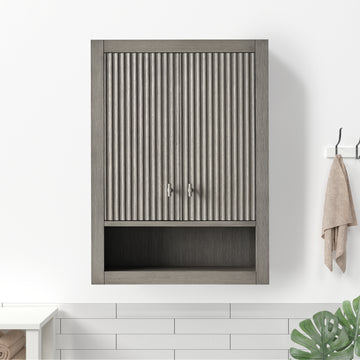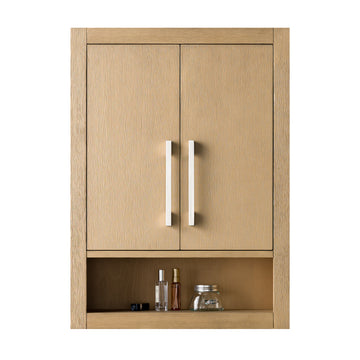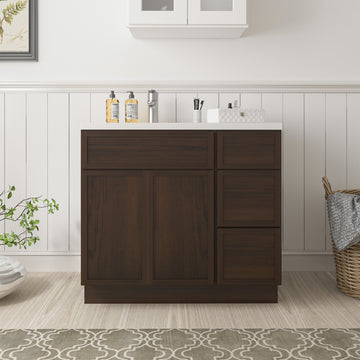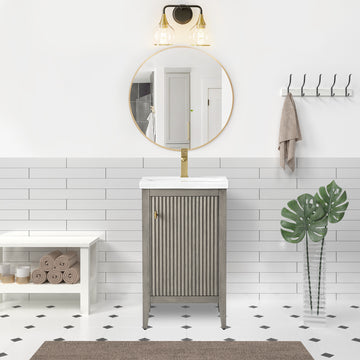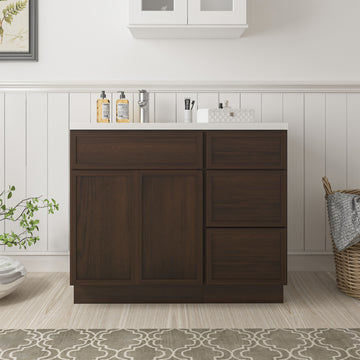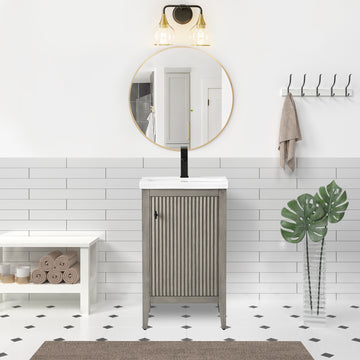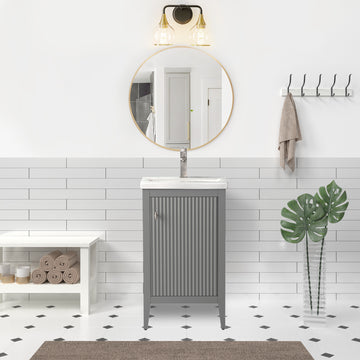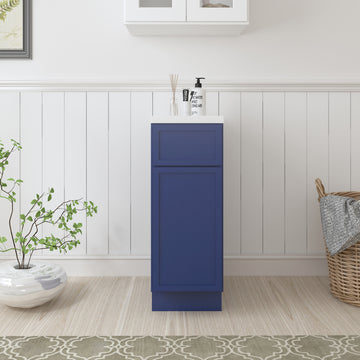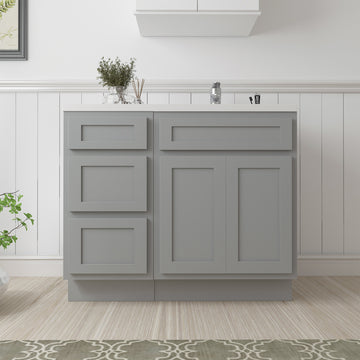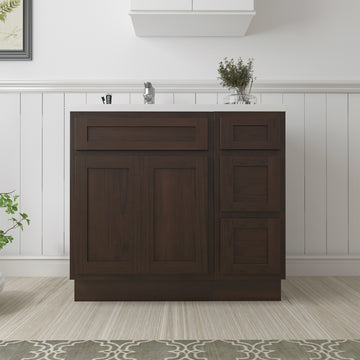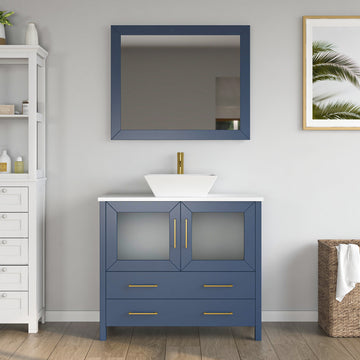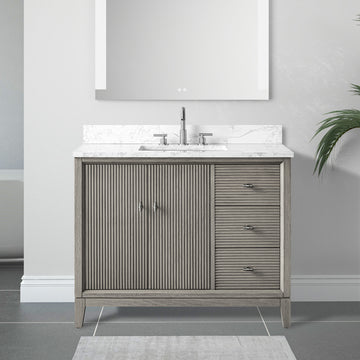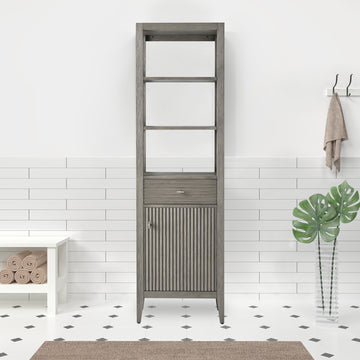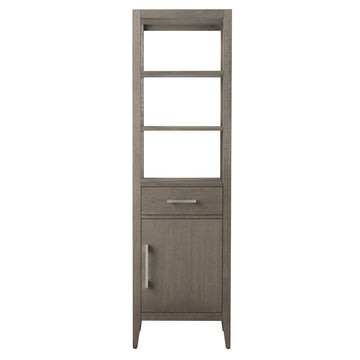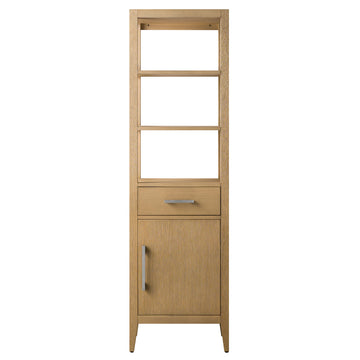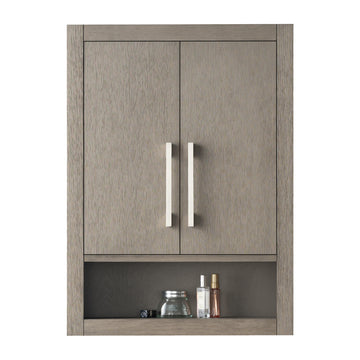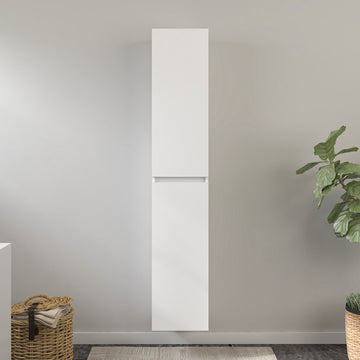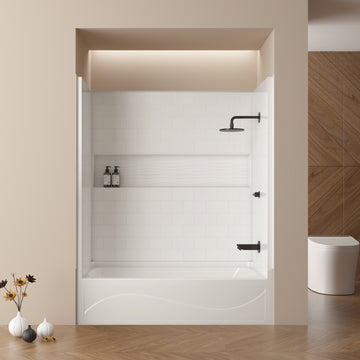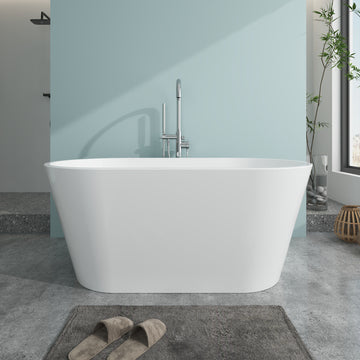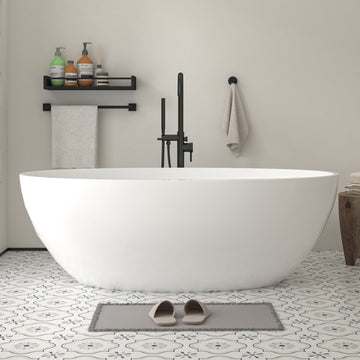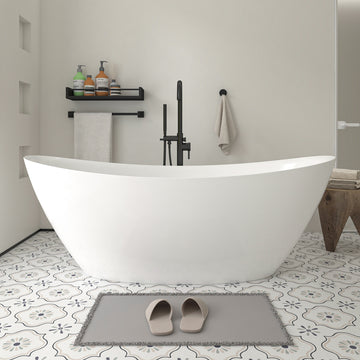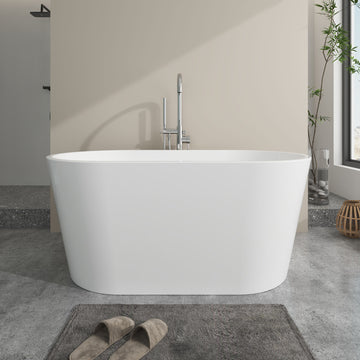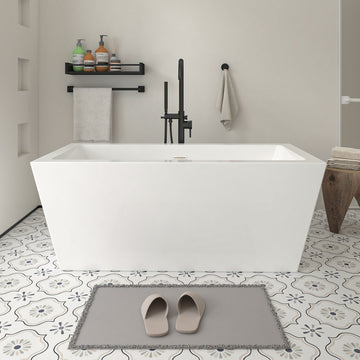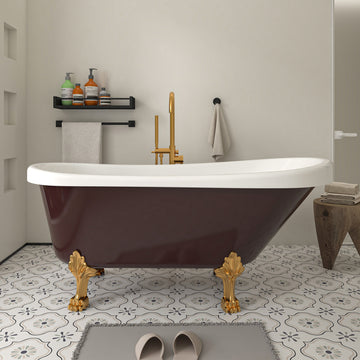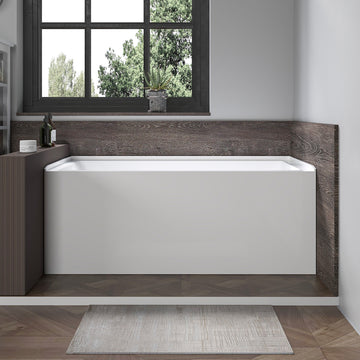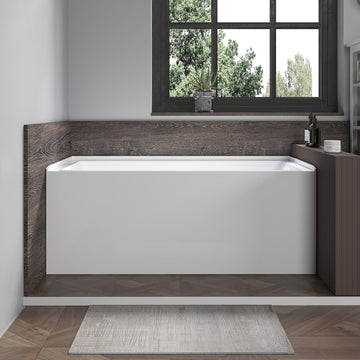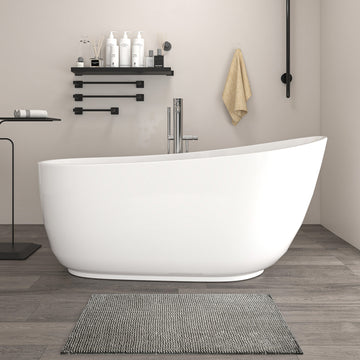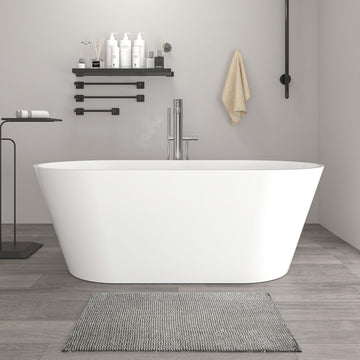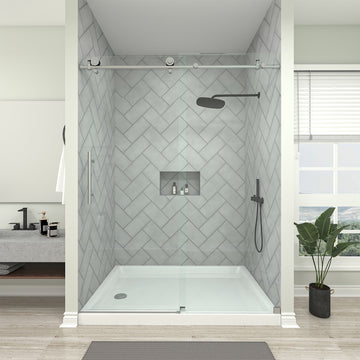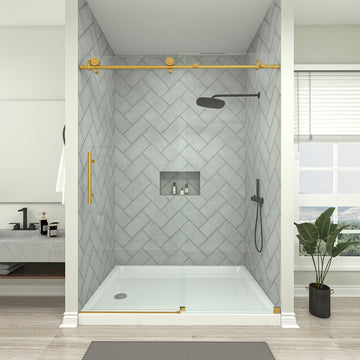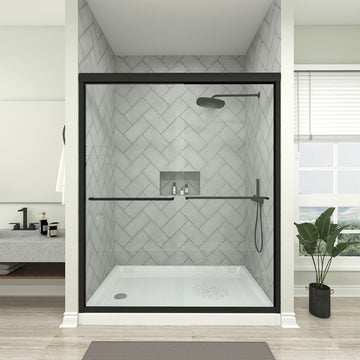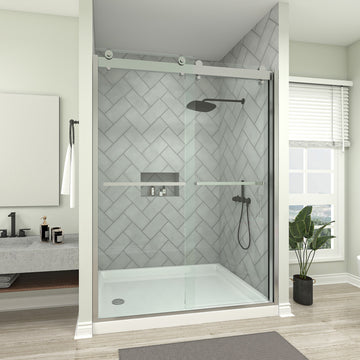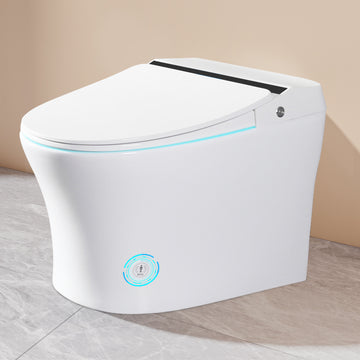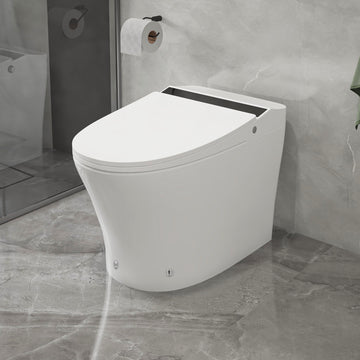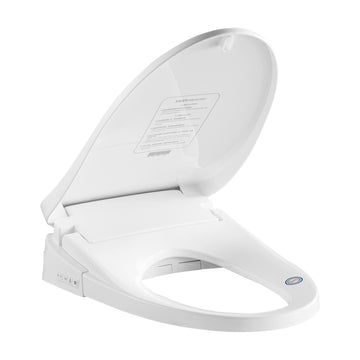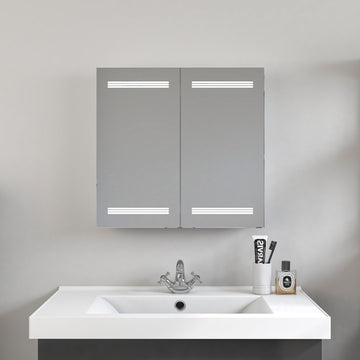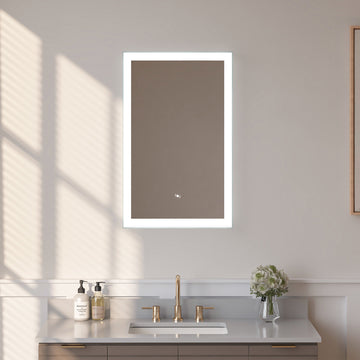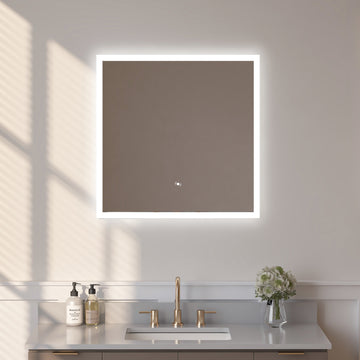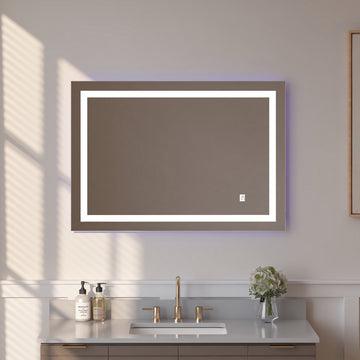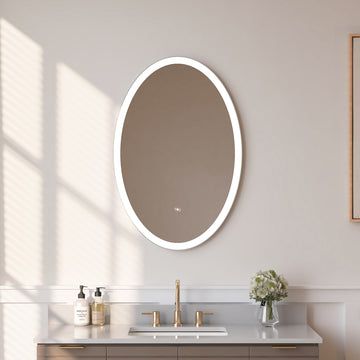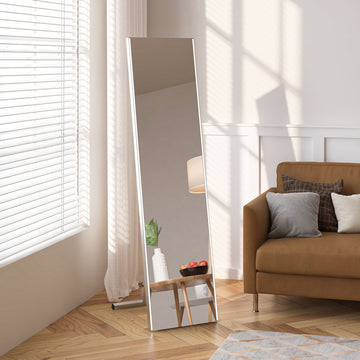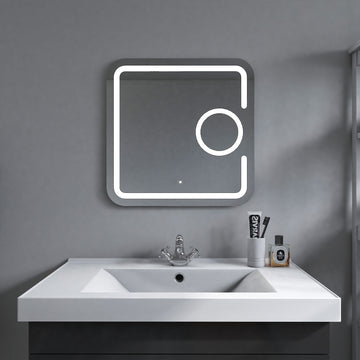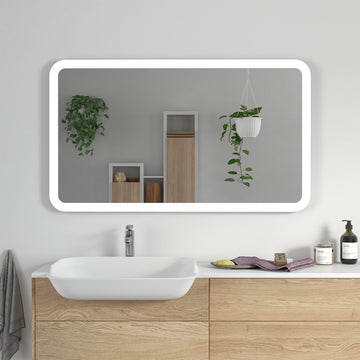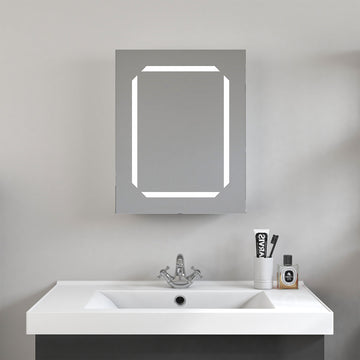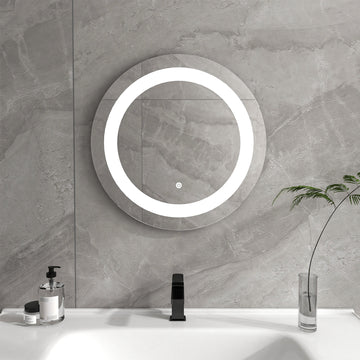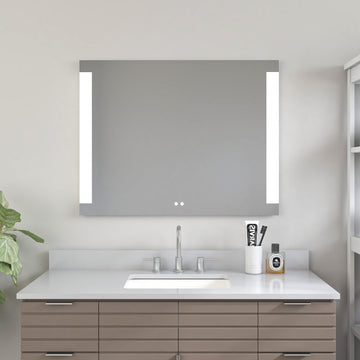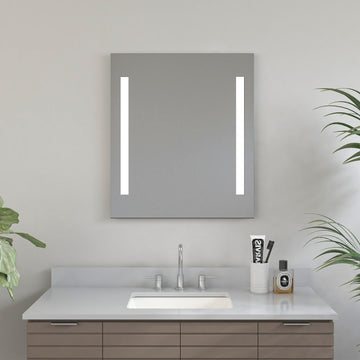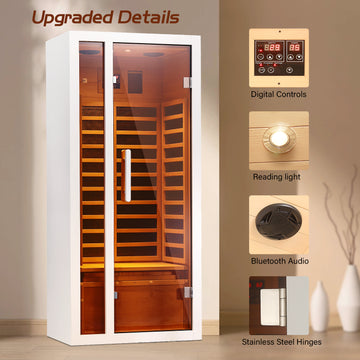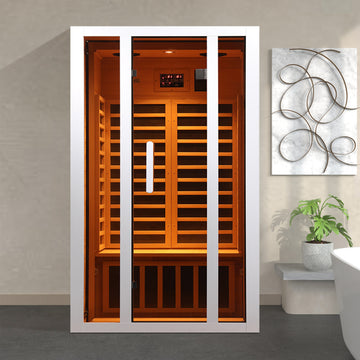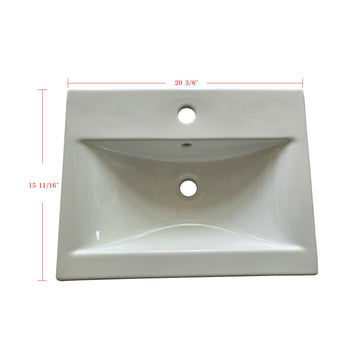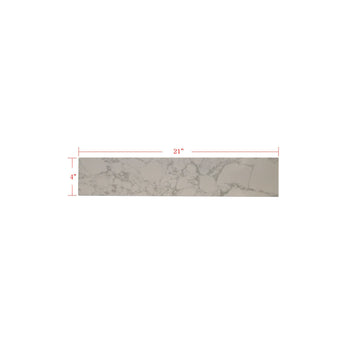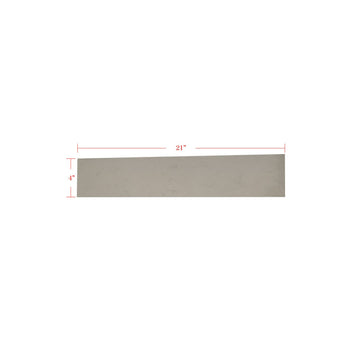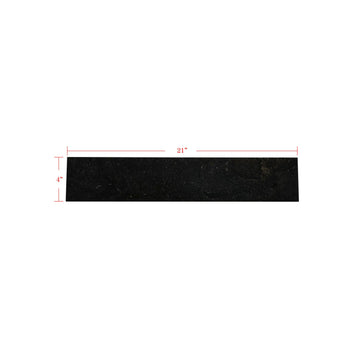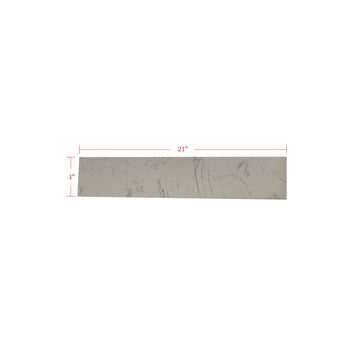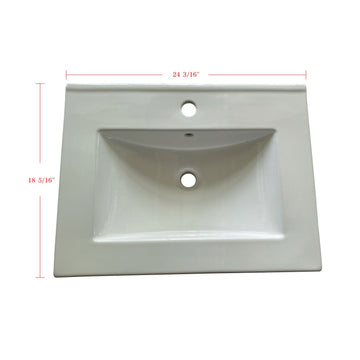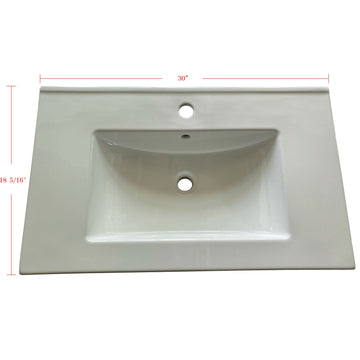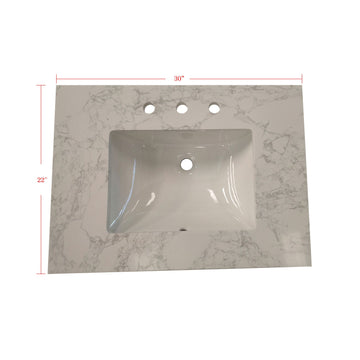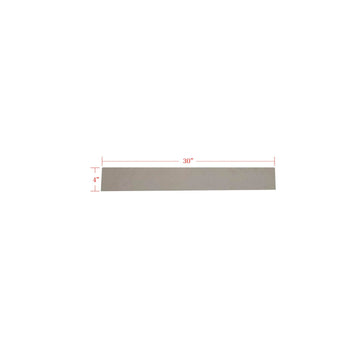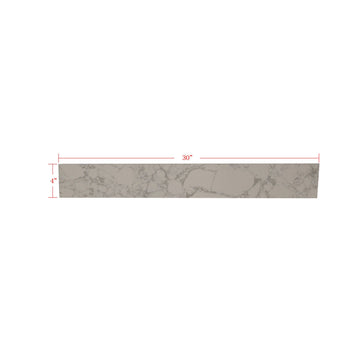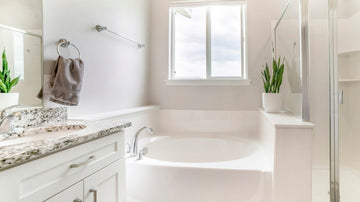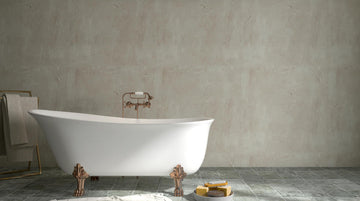Roman tub faucets are designed for tubs with a wide deck area. They are usually installed on the rim of the tub itself. This kind of faucet isn’t new, but they are not exactly a standard choice for bathtub owners. You might see them in showrooms or renovations and wonder if you need one too, or whether it’s just a stylistic choice.
This article walks through what a Roman tub faucet is, how it’s built, and whether it fits your bathroom setup. Read on to discover if it’s the right type of faucet for your space.
What is a Roman tub faucet?
You might’ve seen it in the movies, where water flows out gracefully from fixtures mounted right onto the tub deck. A kind of old world luxury. Off topic, but if you’ve spent time in Baludr’s Gate 3, think of the faucet in Raphael and Haarlep’s room that restores all your hit points.
Roman tub faucets are deck-mounted faucets designed for bathtubs with wide, flat rims, as we’ve described in the intro. They typically fit a drop-in alcove tub with extra space around the edges. Unlike most standard bathroom setups that use freestanding or wall-mounted faucets (which are easier to install and adapt to different layouts), Roman faucets require a bit more planning. You need the right kind of tub, the correct spacing on the deck, and access below the tub for proper plumbing installation.
Parts of a Roman tub faucet includes:
-
The spout. Usually arched and sits directly on the deck. It delivers a high water flow rate to fill large tubs quickly.
-
Handles. Normally two on each side.
-
Valve system, hidden below the deck.
The main visual difference is how Roman faucets are mounted directly into the deck rather than sticking up from the floor (freestanding) or out from the wall. This means cleaner lines if done right, but also more labor upfront. It’s not a plug-and-play situation. You’ll need access underneath the tub deck, and the plumbing has to be precise.
Compared to freestanding faucets, which are popular for their flexibility and minimal install requirements, Roman tub faucets are more permanent. Once installed, there’s not much room for adjustment. And while wall-mounted faucets can offer a similar elegant look, they’re often even trickier to install, requiring reinforcement inside the wall.
So if you’re building from scratch or fully renovating, Roman tub faucets can make sense. But for quick updates or limited space, most people opt for freestanding designs.
Do you need a Roman tub faucet? (Pros and cons)
Whether or not you need a Roman tub faucet depends entirely on your setup and your priorities. These faucets aren’t a universal upgrade, they make sense in some situations, but not all.
On the plus side, Roman tub faucets look clean and intentional. Because they’re deck-mounted, the plumbing is hidden, giving your bathroom a more streamlined, built-in feel. They also tend to have a higher flow rate than regular bathroom faucets, which means they can fill large tubs faster. It is a huge plus if you use your tub regularly.
Another pro is design flexibility. Since the faucet components (spout, handles, hand shower) are installed separately, you have more freedom to space them out or choose more distinct styles. If you’re aiming for a custom or luxury look, Roman faucets can help get you there.
But the downsides are worth weighing. Installation is more complex and often requires access beneath the tub deck. This makes it a poor candidate for retrofitting unless you’re already remodeling. You also need a tub with a wide enough rim or a platform for mounting, not all tubs allow for this. And once installed, adjusting or repairing a Roman faucet can be more difficult than with a freestanding unit.
Lastly, from a cost perspective, Roman faucets tend to be more expensive than basic options. Not only because of the hardware itself, but also due to the labor involved in installation.
In summary:
-
Pros: High water flow rate, elegant built-in look, customizable layout, hides plumbing.
-
Cons: Complex installation, higher cost, not ideal for all tubs, harder to access for repairs.
If you’re doing a full renovation or building new, and your tub allows for it, a Roman faucet might be a good match. But if you're working with an existing setup or just need something practical, you may be better off with freestanding or wall-mounted options.
Roman tub faucet vs. freestanding faucet vs. wall-mounted faucet

Choosing between a Roman tub faucet, a freestanding faucet, or a wall-mounted faucet isn’t just about aesthetics. It affects installation, plumbing access, usability, and long-term maintenance.
Roman tub faucets are deck-mounted. Meaning they sit directly on the rim or platform surrounding the bathtub. This setup works well for built-in or drop-in tubs with a wide enough ledge. Roman faucets usually include separate handles and spouts, sometimes even a hand shower. They tend to offer a more tailored, integrated look, and often have a higher flow rate. It's useful for filling large tubs quickly. But they do come with installation challenges, requiring plumbing access below the deck, and they’re not compatible with every tub shape or layout.
In contrast, freestanding tub faucets are exactly what they sound like: independent units that rise from the floor next to the tub. These are common with clawfoot, oval, or freestanding tubs that don’t have a surrounding deck. Freestanding faucets are visually dramatic and can be placed with more flexibility, especially if the bathroom layout allows for it. They’re also easier to service since all plumbing is typically more accessible. The main drawback is the space they take up, both physically and visually.
Wall-mounted faucets, often seen in minimalist or modern bathrooms, are affixed to the wall behind or beside the tub. These save space and create a very clean, uncluttered look. However, installation is more demanding: plumbing must be routed through the wall, which limits their practicality to new builds or major renovations. Access for maintenance is trickier as well.
In short
-
Roman faucets work best for built-in tubs with a deck and offer a luxe, custom appearance.
-
Freestanding faucets suit standalone tubs and give a bold, spa-like vibe with flexible placement.
-
Wall-mounted faucets are ideal for minimalists or small spaces but require careful planning and wall access.
A perfect faucet depends on your tub type, bathroom layout, and how deep into renovation you're willing to go.
So, should you get a Roman tub faucet?
If you’re remodeling a drop-in or deck-mounted tub and want something that feels solid, elegant, and tailored. A Roman tub faucet can be a great choice. It’s not for every setup, and definitely not the easiest to install, but when it fits, it fits well. That said, if you’re looking for flexibility, easier plumbing access, or plan to change your bathroom layout down the line, a freestanding or wall-mounted faucet might save you a lot of trouble.
A freestanding faucet is a safe choice, and Roman tub faucets are more of a commitment. But if you already have the right tub, the space, and the design to match, it’s a commitment that can pay off.
FAQs
Can I replace a regular tub faucet with a Roman tub faucet?
Only if your tub has a wide enough deck or platform to support a Roman faucet. These faucets require separate holes for the spout and handles, and the plumbing needs to be accessible beneath the mounting surface. Converting from a wall-mounted or freestanding faucet setup usually involves significant renovation.
Do Roman tub faucets come with a shower attachment?
Some Roman tub faucet sets include a hand shower attachment (also called a deck-mounted sprayer). These are useful for rinsing or cleaning the tub, though not all models include one — and adding one later often means drilling another hole in the deck and updating the valve system.
Are Roman tub faucets universal in size?
No. There’s no single universal standard for hole spacing or valve compatibility. While many Roman faucets have a general spacing of 8 inches or more between handles and spout, manufacturers vary. Always check the product specs and your tub’s measurements before buying.
Is installing a Roman tub faucet difficult?
Installation is more complex than with wall-mounted or freestanding faucets. It typically requires access beneath the tub deck, proper hole spacing, and careful alignment. If you're replacing an existing Roman faucet, it’s more manageable; however, a fresh installation often requires professional help.
